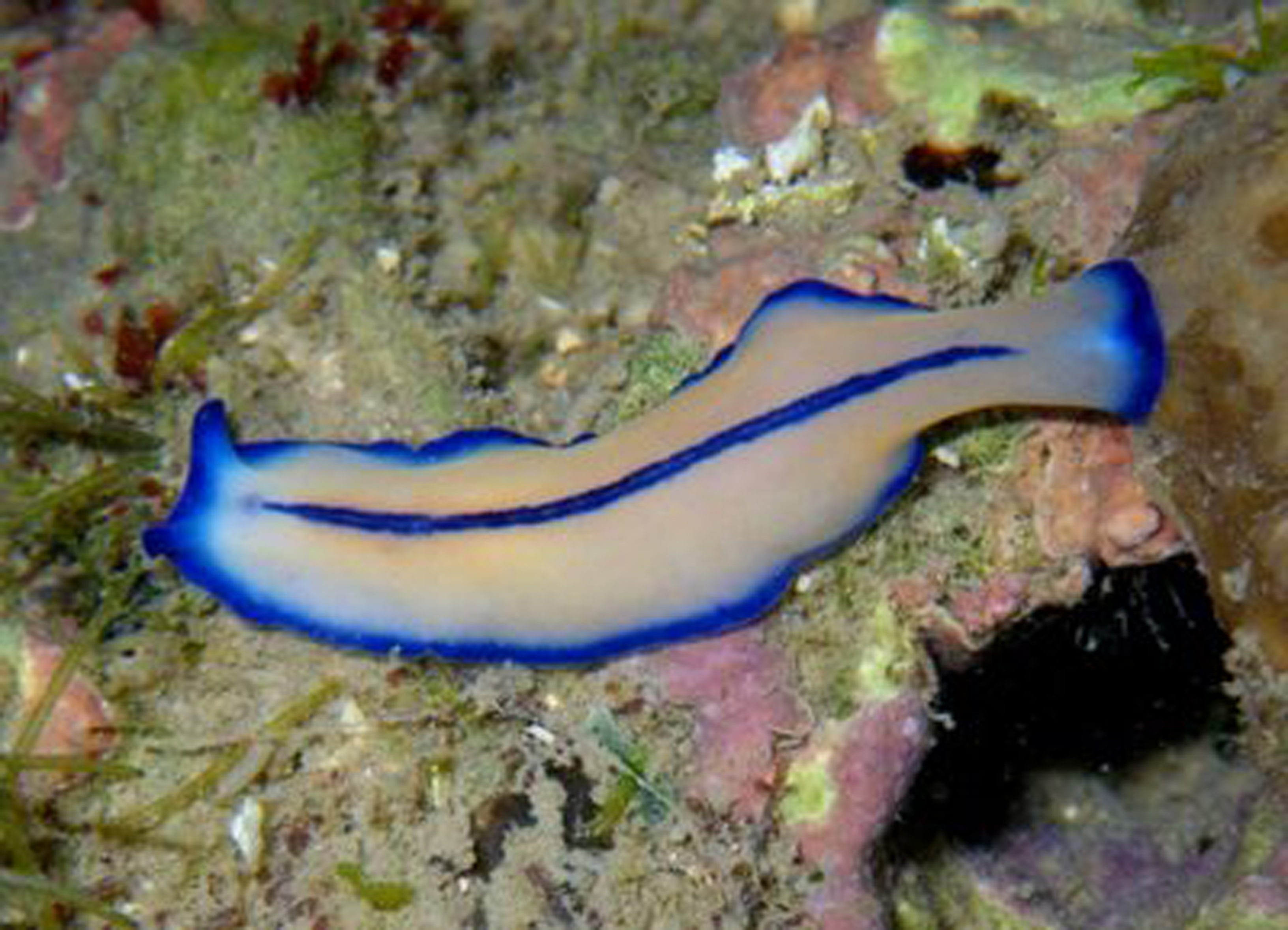
The flatworms or Platyhelminthes are wormlike animals with a single major opening to the gut. This opening functions as both a mouth and an anus. Between the gastrodermis (lining of the gut) and the epidermis, the body is filled with tissues, including layers of muscle, connective tissue, and reproductive organs. Included in the flatworms are free-living forms (class Turbellaria), and two major groups of animal parasites (class Trematoda-flukes-and class Cestoda- tapeworms). Most tubellarians are bottom dwellers in marine water or freshwater or live in moist terrestrial environments, but a few species are symbiotic or parasitic. The majority of the larger species are found on the underside of rocks or other hard objects in freshwater streams or in the littoral zones of the ocean. All of the cestodes and trematodes exist as endoparasites and most exhibit indirect life cycles with more than one host. The initial host is usually an invertebrate, and the final host is most often a vertebrate. Anumber of species utilize humans as a final host.
General Characteristics of Flatworms
The free-living flatworms generally range in size from five to fifty millimeters. The epidermis is covered with cilia, and locomotion is achieved through a combination of ciliary movements and the contraction and relaxation of layer of circular muscles that go around the body, and a layer of longitudinal muscles that extent down the length of the body. The most commonly studied turbellarians are the planarians. The digestive system consists of a mouth on the ventral surface, a pharynx, and an intestine. Planarians are mostly carnivorous, feeding mainly on nematodes, rotifers, and insects. In contrast to the parasitic species, the turbellarians have simple life cycle. Some can reproduce by asexual fission, but most reproduce sexually. While the turbellarians are hermaphroditic, they generally crossbreed. Planarians demonstrate a remarkable ability to regenerate. If a section is excised from the middle of the worm, it will regenerate both a new tail and a new head. Flukes primarily differ from the turbellarians in their adaptions for parasitism, including organs for adhesion such as suckers or hooks and an increased reproductive capacity. They are generally leaf-shaped, varying in size from ten to twenty millimeters. Most flukes, such as those in the class Digenea, have complex life cycles. The eggs produced by the mature fluke pass fromthe definitive host and hatch in water to form free-swimming larvae called miracidia. The miracidium enters the tissue of an intermediate host, snails, and transforms into a sporocyst, which reproduces asexually to form rediae. The rediae reproduce asexually to form cercariae, which leave the snail and penetrate a second intermediate host, such as fish, or encyst on vegetation, where they become metacercariae, juvenile flukes. When the metacercariae are eaten by the definitive host, they develop into mature flukes. Tapeworms are also keenly adapted for parasitism, but unlike the flukes, they have long, slender bodies that can reach lengths of several meters and lack a digestive system. They obtain digested nutrients directly from the gut of the host. The tapeworm body consists of a linear series of proglottids. The tapeworm grows lengthwise by adding new proglottids. Mature proglottids contain fertilized eggs and break off the end of the tapeworm to be excreted out of the host. Almost all cestodes require at least two hosts, and the adult is a parasite in the digestive tract of vertebrates. One of the intermediate hosts is usually an invertebrate. Almost all species of vertebrates are subject to tapeworm infection.
Flatworms Facts
Classification:
Kingdom: Animalia
Subkingdom: Bilateria
Phylum: Platyhelminthes
Classes: Turbellaria (free-living), Monogenea (ectoparasitic flukes with
a one-host life cycle), Trematoda (endoparasitic flukes), Cestoda
(tapeworms)
Subclasses: Cestoda-Cestodaria (body not segmented), Eucestoda
(body segmented into proglottids)
Orders: Turbellaria-Acoela (no gut cavity), Rhabdocoela (simple tubular
gut), Alloeocoela (gut with one main branch and small side
branches), Tricladia (gut with three branches), Polycladia (gut with
many main branches); Trematoda-Aspidogastrea (endoparasitic
with a one-host life cycle), Digenea (endoparasitic with at least
a two-host life cycle); Eucestoda-Bothriocephaloidea (fish tapeworms),
Taenioidea (pig and beef tapeworms)
Geographical location: All over the world
Habitat: Turbellaria-generally found in ponds, lakes, streams, and
oceans; Monogenea, Trematoda, and Cestoda-larvae may be found
in streams, but adults live within the body of a host
Gestational period: Varies among species, but most species lay eggs
within a few days after fertilization; eggs usually hatch within a few
days to a few weeks after being deposited
Life span: Varies among species; can be as short as a year in some turbellarians
and up to thirty years in some flukes
Special anatomy: Elongated, bilateral invertebrates without appendages,
have neither a true body cavity nor a circulatory system; parasitic
species have specially adapted mouth parts for attaching to the
tissues of the host
Other popular Animals
Photo Gallery of - Flatworms
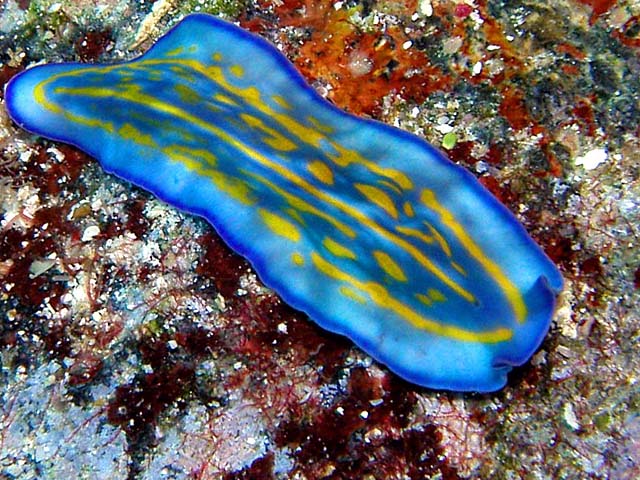



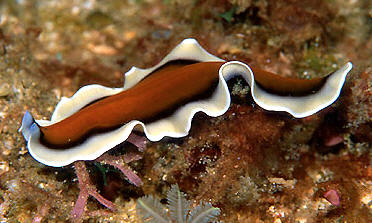
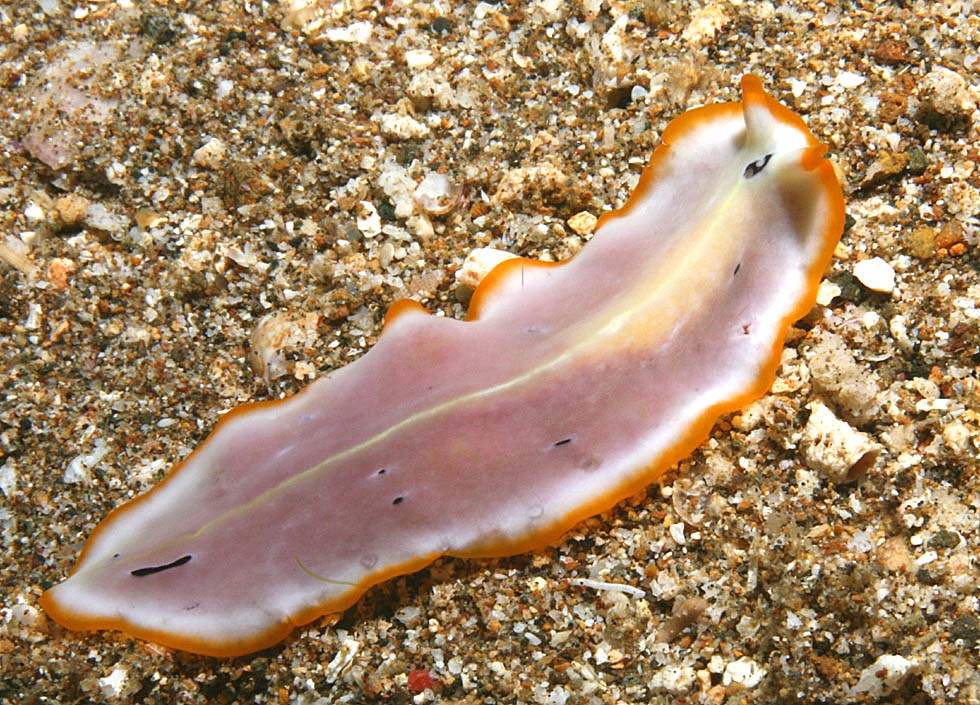
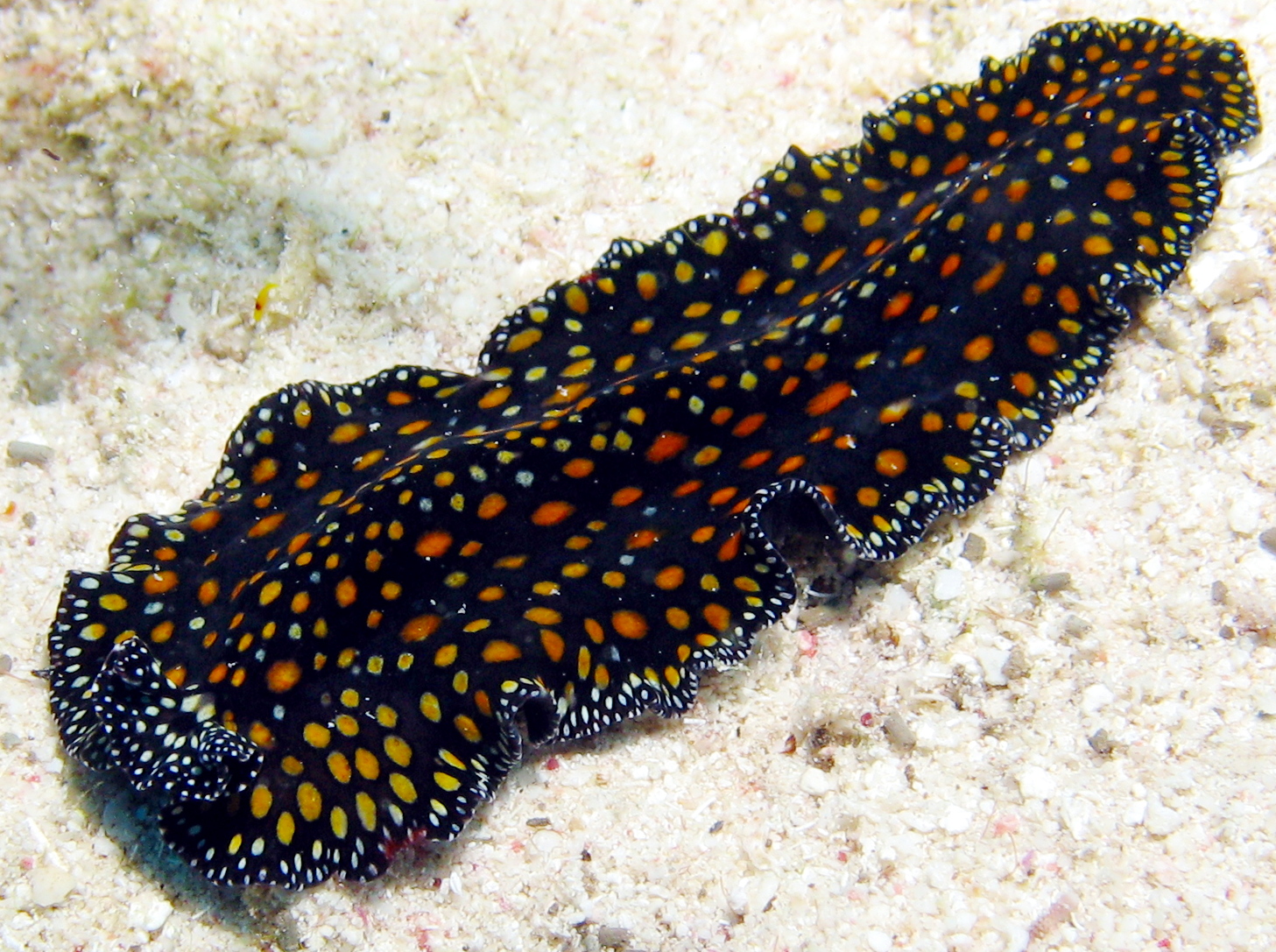

 Animalia Life
Animalia Life